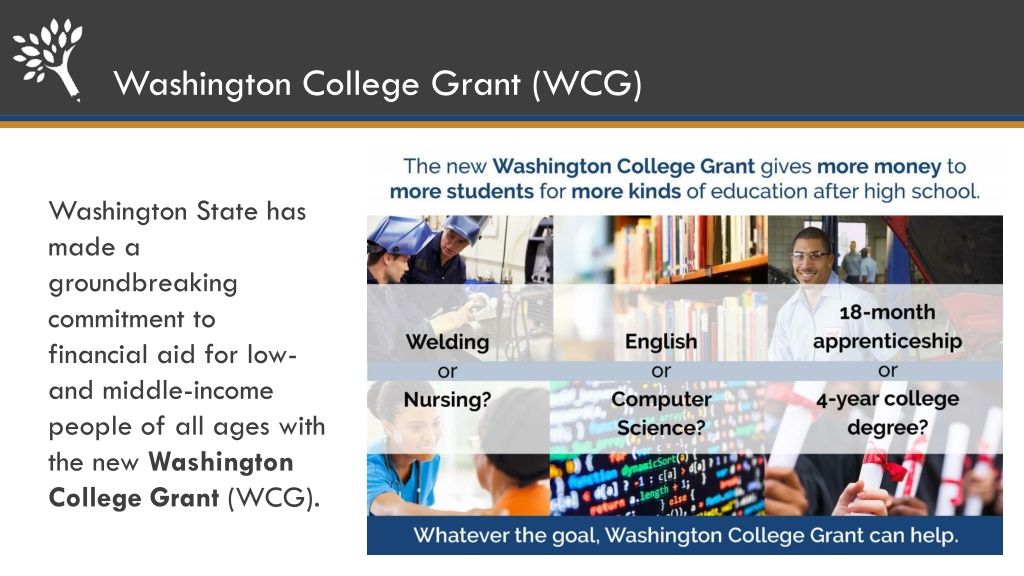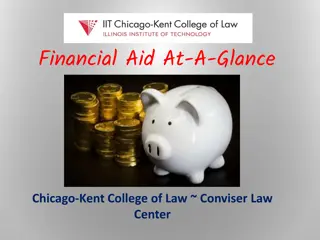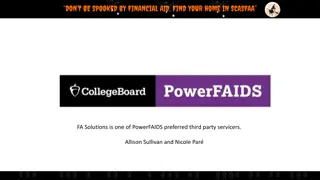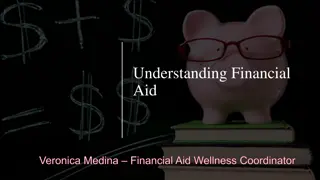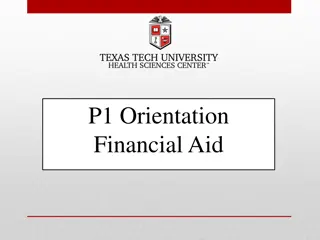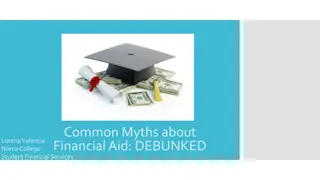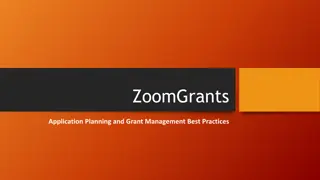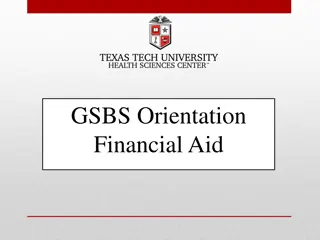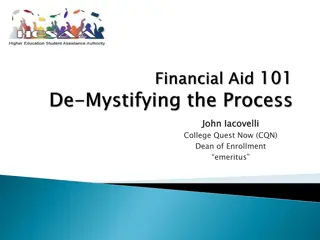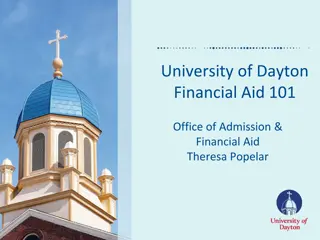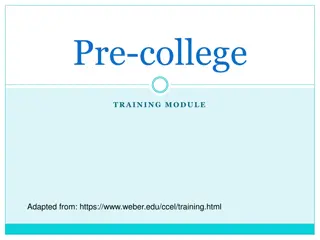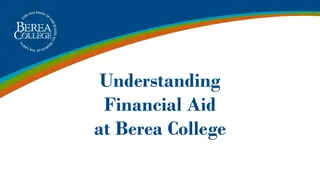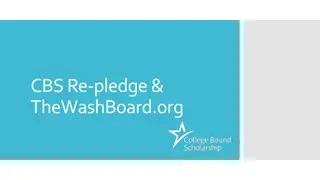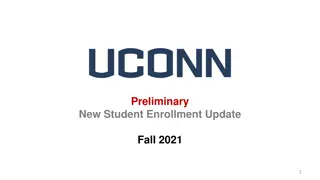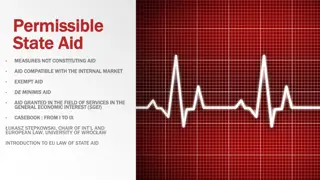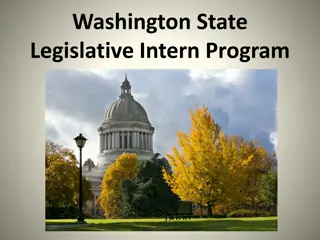Washington College Grant: Transforming Financial Aid in Washington State
Washington State has introduced the Washington College Grant (WCG) to revolutionize financial aid for low- and middle-income individuals of all ages, offering increased support for various post-high school education pathways. The grant provides funding for college, apprenticeships, and other training programs, expanding career opportunities and earning potential. Additionally, programs like Opportunity Pathways and College Bound aim to instill a college-going culture and offer financial benefits. The WCG replaces the State Need Grant with significant enhancements effective fall 2020, including expanded eligibility and increased award amounts. Learn more about this groundbreaking initiative and how it can benefit students in Washington State.
Download Presentation

Please find below an Image/Link to download the presentation.
The content on the website is provided AS IS for your information and personal use only. It may not be sold, licensed, or shared on other websites without obtaining consent from the author. Download presentation by click this link. If you encounter any issues during the download, it is possible that the publisher has removed the file from their server.
E N D
Presentation Transcript
Washington College Grant (WCG) Washington State has made a groundbreaking commitment to financial aid for low- and middle-income people of all ages with the new Washington College Grant (WCG).
Opportunity Pathways (wsac.wa.gov/pathways) It s never too early to plan ahead. It s never too late to change your future. The new Washington College Grant gives more money to more students for more kinds of education after high school. Any education after high school college, apprenticeship, or other training expands career options and increases earning potential. There are affordable college and career training opportunities for everyone. The first, best step is to apply for financial aid.
What About College Bound? CBS is a college access and support program. Promotes college-going culture by starting the conversation in middle school. Provides six years of support and motivation. Counselors and advocates receive resources and help engage families. CBS has additional financial benefits. Provides additional funding for a small book allowance. Awards are not prorated based on income level for eligible students.
Washington College Grant Replaces the State Need Grant. Major changes begin in fall 2020. 2019-20 2020-21 Additional funding to serve about 6,000 more students. Maximum award amounts increased to cover full tuition and fees at public rates. Guaranteed funding for eligible students. Expanded eligibility to 100% Median Family Income. Registered apprenticeships added.
Washington College Grant Replaces the State Need Grant. Major changes begin in fall 2020. 2019-20 2020-21 It s not too late to apply for aid for 2019-20. Ask your school s financial aid office if you can receive WCG. Guaranteed funding for eligible students. Expanded eligibility to 100% Median Family Income. Registered apprenticeships added.
Washington College Grant: Award examples Current through 2019-20 Starting in 2020-21 Income level (% of WA Median Family Income) Income at MFI cap for a family of 4 (2019-20 levels) Example Award proration Award amount Award proration Award amount 70% of max award Ex.1 51 55 $50,500 $2,875 100% $4,108 Ex.2 76 100 $92,000 Not eligible Not eligible 10% $410 Note. Examples for illustration purposes only. Based on full-time CTC student and 2019-20 award amounts.
Washington College Grant: Income eligibility Award proration (% of max award) Income level (% of WA Median Family Income) Income at MFI cap for a family of 4 (2019-20 levels) Current through 2019-20 Starting in 2020-21 0 50 51 55 56 60 61 65 66 70 71 75 76 100 $46,000 $50,500 $55,000 $59,500 $64,000 $69,000 $97,000 100% 70% 65% 60% 50% Not eligible Not eligible 100% 100% 70% 60% 50% 24.5% 10% Source: WSAC Published MFI Chart for 2019-20 WCG
Washington College Grant: Increased funding WCG funding ($ in millions) Funding of other need-based programs $468 Program 2019-20 2020-21 $377 College Bound $19.5 M $17 M $324 $299 State Work Study $7.8 M $7.8 M Passport to College $2.2 M $2.2 M Passport to Careers $0.5 M $0.5 M 2017-18 2018-19 2019-20 2020-21
Washington College Grant: Award amounts Maximum award amounts for public institutions increase to cover full tuition and fees 2019-20 Maximum Award Amount for full-time students attending 3 quarters or 2 semesters $4,108 at CTCs $6,587 for Applied Bachelor s at CTCs Can be used to cover other educational costs, as determined by financial aid administrator Award amount is prorated based on income eligibility (MFI level) and enrollment level
Washington College Grant: Award examples Income level (% of WA Median Family Income) Income at MFI cap for a family of 4 (2019-20 levels) Current through 2019-20 Starting in 2020-21 Example Award proration Award amount Award proration Award amount 70% of max award Ex.1 51 55 $50,500 $2,875 100% $4,108 Ex.2 76 100 $92,000 Not eligible Not eligible 10% $410 Note. Examples for illustration purposes only. Based on full-time CTC student and 2019-20 award amounts.
Reacher Higher Washington The combination of the Washington College Grant and the investment to increase financial aid applications provides a unique opportunity to engage statewide. WSAC s affordability initiative focused on increasing financial aid applications (FAFSA/WASFA) for the High School Graduating Class of 2020. 12th Year Campaign Outreach to students, parents, and local educators Partnerships with education and government leaders Digital Tools, including texting to CBS seniors
Workforce Education Investment Act HB 2158 Historic investment creates dedicated revenue source for higher education. Three-tiered increase to state s business- and-occupation tax paid by professions that depend on higher education Oversight board Revenue for 2019-20 estimated at $373.8 million. Used on higher education operations, compensation, programs, and student aid.
